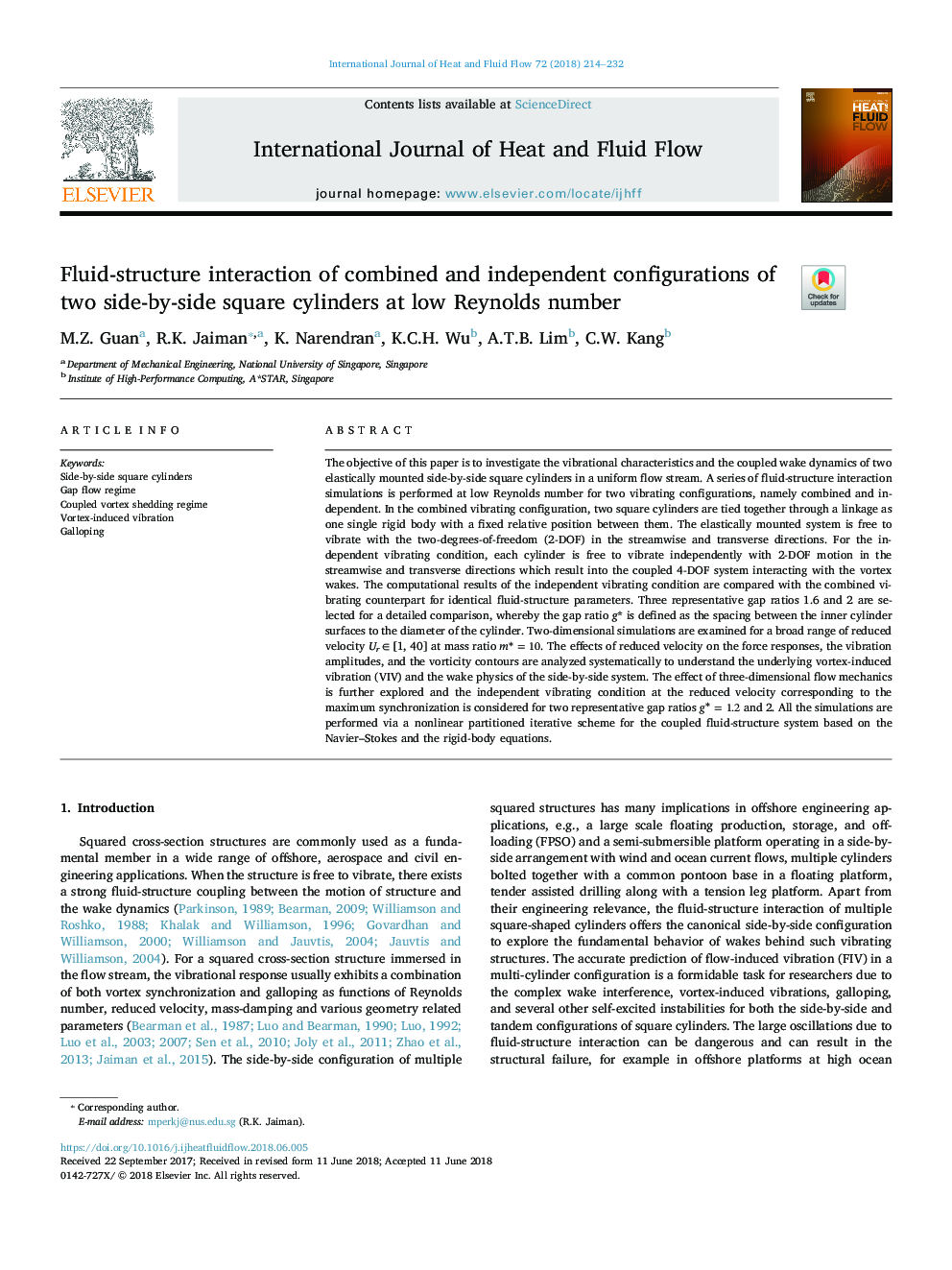| Article ID | Journal | Published Year | Pages | File Type |
|---|---|---|---|---|
| 7053431 | International Journal of Heat and Fluid Flow | 2018 | 19 Pages |
Abstract
The objective of this paper is to investigate the vibrational characteristics and the coupled wake dynamics of two elastically mounted side-by-side square cylinders in a uniform flow stream. A series of fluid-structure interaction simulations is performed at low Reynolds number for two vibrating configurations, namely combined and independent. In the combined vibrating configuration, two square cylinders are tied together through a linkage as one single rigid body with a fixed relative position between them. The elastically mounted system is free to vibrate with the two-degrees-of-freedom (2-DOF) in the streamwise and transverse directions. For the independent vibrating condition, each cylinder is free to vibrate independently with 2-DOF motion in the streamwise and transverse directions which result into the coupled 4-DOF system interacting with the vortex wakes. The computational results of the independent vibrating condition are compared with the combined vibrating counterpart for identical fluid-structure parameters. Three representative gap ratios g*=1.2, 1.6 and 2 are selected for a detailed comparison, whereby the gap ratio g* is defined as the spacing between the inner cylinder surfaces to the diameter of the cylinder. Two-dimensional simulations are examined for a broad range of reduced velocity Urâ¯ââ¯[1, 40] at mass ratio m*=10. The effects of reduced velocity on the force responses, the vibration amplitudes, and the vorticity contours are analyzed systematically to understand the underlying vortex-induced vibration (VIV) and the wake physics of the side-by-side system. The effect of three-dimensional flow mechanics is further explored and the independent vibrating condition at the reduced velocity corresponding to the maximum synchronization is considered for two representative gap ratios g*=1.2 and 2. All the simulations are performed via a nonlinear partitioned iterative scheme for the coupled fluid-structure system based on the Navier-Stokes and the rigid-body equations.
Keywords
Related Topics
Physical Sciences and Engineering
Chemical Engineering
Fluid Flow and Transfer Processes
Authors
M.Z. Guan, R.K. Jaiman, K. Narendran, K.C.H. Wu, A.T.B. Lim, C.W. Kang,
